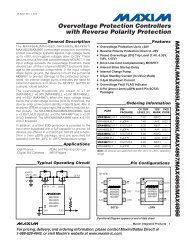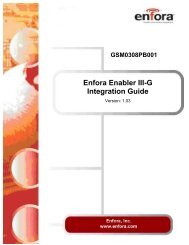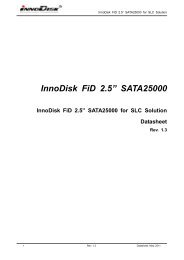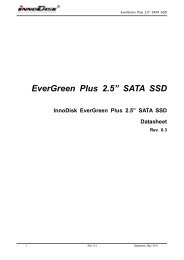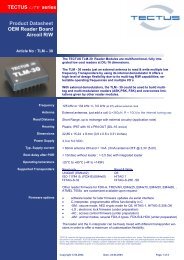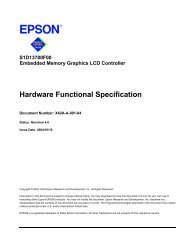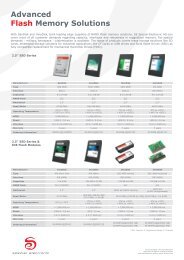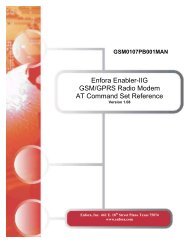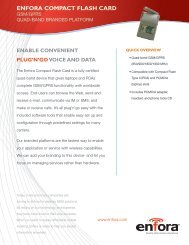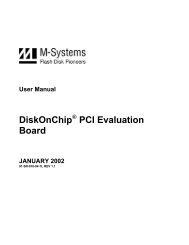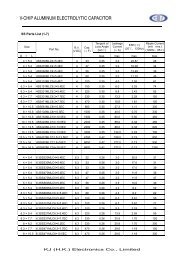Bluetooth I2C Bus Adapterâ¢
Bluetooth I2C Bus Adapterâ¢
Bluetooth I2C Bus Adapterâ¢
Create successful ePaper yourself
Turn your PDF publications into a flip-book with our unique Google optimized e-Paper software.
2.1 Serial Interface<br />
The serial port of the <strong>Bluetooth</strong> <strong>I2C</strong> <strong>Bus</strong> Adapter is only used to execute AT commands.<br />
Hence, it is not possible to transmit data transparently over air as with the normal serial port<br />
adapter.<br />
Please note that HW flow control is not supported. The CTS pin is instead used as an<br />
external trig signal.<br />
2.2 IO Pins<br />
The following pins differ from the normal serial port adapter.<br />
• Serial Select 0: <strong>I2C</strong> Serial Data (SDA). The SDA pin has a 47kΩ internal pull-up to<br />
VCC (2.9-3.1V). Normally, a 2.2kΩ is more common in <strong>I2C</strong> applications and a<br />
2.2kΩ external pull-up could be used if necessary.<br />
• Serial Select 1: <strong>I2C</strong> clock (SCL). The SCL pin has a 47kΩ internal pull-up to VCC<br />
(2.9-3.1V). Normally, a 2.2kΩ is more common in <strong>I2C</strong> applications and a 2.2kΩ<br />
external pull-up could be used if necessary.<br />
• UART-CTS: External trig input.<br />
• UART-RTS: Not used.<br />
See Electrical and Mechanical data sheet for details.<br />
2.3 Protocol over air<br />
To communicate with the <strong>Bluetooth</strong> <strong>I2C</strong> <strong>Bus</strong> Adapter over air, a simple <strong>I2C</strong> “look-alike”<br />
protocol must be used.<br />
The following request packets are defined:<br />
• Write: Writes data to <strong>I2C</strong> bus.<br />
• Read: Reads data from <strong>I2C</strong> bus.<br />
• Time: Special packet to timestamp response packets.<br />
• Tag: Special packet to set an identifier to a request packet. The identifier is<br />
included in the response packet. Hence, it is possible to identify what response<br />
that is associated with what request.<br />
Each packet consists of a start byte and a stop byte. The start byte is also used as the<br />
request packet identifier. Hence, there are several actual values of a start byte depending on<br />
what packet type it is. The stop byte can be replaced by the start byte of a new packet. A<br />
combined packet is then created. Typically, for <strong>I2C</strong>, this means a repeated write or a<br />
repeated read.<br />
There are also two types of response packets defined.<br />
• ACK: Response to a successfully performed request.<br />
• NAK: Response to an unsuccessfully performed request.<br />
9



